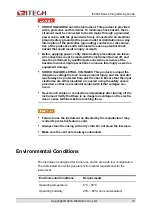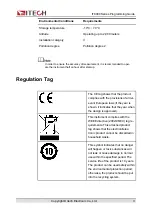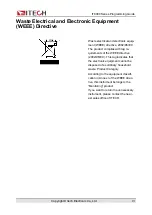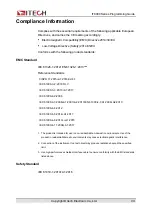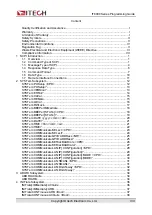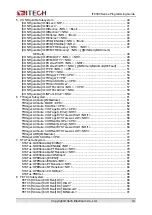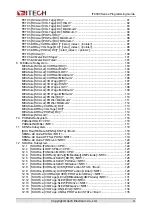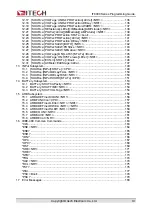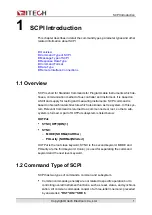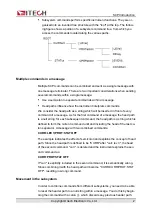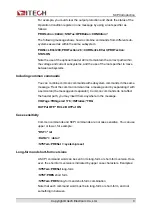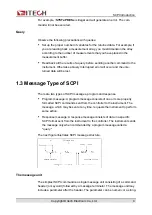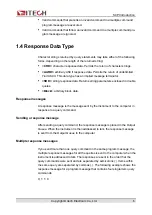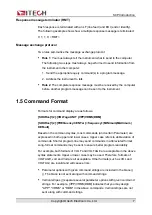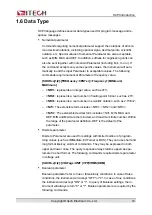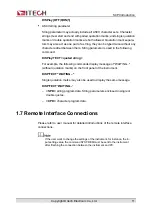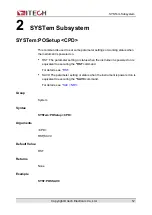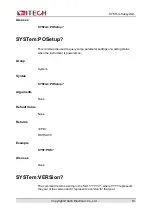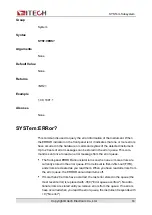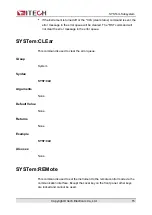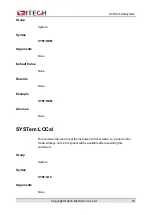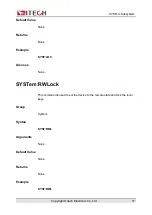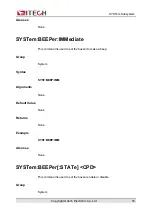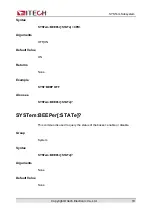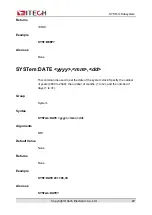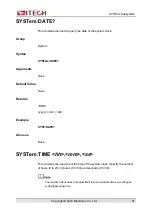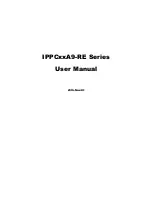
Response message terminator (RMT)
Each response is terminated with an LF (line feed) and EOI (end or identify).
The following example shows how a multiple response message is terminated:
0; 1; 1; 0; <RMT>
Message exchange protocol
Two rules summarize the message exchange protocol:
•
Rule 1
: You must always tell the instrument what to send to the computer.
The following two steps must always be performed to send information from
the instrument other computer:
1. Send the appropriate query command(s) in a program message.
2. Address the instrument to talk.
•
Rule 2
: The complete response message must be received by the computer
before another program message can be sent to the instrument.
1.5 Command Format
Formats for command display are as follows:
[SOURce[1|2]:]VOLTage:UNIT {VPP|VRMS|DBM}
[SOURce[1|2]:]FREQuency:CENTer {<frequency>|MINimum|MAXimum|
DEFault}
Based on the command syntax, most commands (and certain Parameter) are
expressed in both upper and lower cases. Upper case refers to abbreviation of
commands. Shorter program line may send commands in abbreviated format.
Long-format commands may be sent to ensure better program readability.
For example, both formats of VOLT and VOLTAGE are acceptable in the above
syntax statements. Upper or lower case may be used. Therefore, formats of
VOLTAGE, volt and Volt are all acceptable. Other formats (such as VOL and
VOLTAG) are invalid and will cause errors.
•
Parameter options with given command strings are included in the brace ({
}). The brace is not sent along with command strings.
•
Vertical stripes (|) separate several parameter options with given command
strings. For example, {VPP|VRMS|DBM} indicates that you may assign
"APP", "VRMS" or "DBM" in the above commands. Vertical stripes are not
sent along with command strings.
Copyright © Itech Electronic Co., Ltd.
7

